Our executive director Terry Allison recently interviewed Erika Endrijonas, superintendent/president of Pasadena City College—an institutional member of ours—and co-chair of our Board of Directors
Pasadena City College Flourishes
Earlier this fall, LGBTQ Presidents executive director Terry Allison had the opportunity to chat with one of our co-chairs Dr. Erika A. Endrijonas about her leadership of Pasadena City College.
Terry: Erika, it’s a pleasure to speak with you about Pasadena City College (PCC) and your presidency. When I was a dean at Cal State LA I worked extensively with PCC, which was just down the street from where I lived. How did you come to the presidency there?
Erika: As is typical in some searches, I was not an active candidate out on the market. Previously, I was at Los Angeles Valley College, where I was able to put the college on a solid financial footing and help it to regain full regional accreditation. When the first PCC search failed in 2018, the outgoing president reached out, and by then I was ready to consider.
Terry: You are president and superintendent?
Erika: Yes. In California community colleges there are various types of CEO positions. The president/superintendent typically leads a single college district. One can serve as president in a multi-campus system where there’s a chancellor. And of course, there’s the opportunity to serve as the chancellor of those multi-campus systems. I moved from a presidency within the Los Angeles Community College district to Pasadena City College, a single college district. I’ve now been here almost three years. PCC’s success was definitely a big draw.
Terry: How would you define that success?
Erika: PCC has been known as a very diverse campus that lives its mission of diversity, equity, and inclusion. Just one example: In the wake of George Floyd’s murder, there was a call to action from California’s statewide chancellor of community colleges. PCC has seven locally elected trustees and one student trustee. Four of our public trustees and our student trustee serve on statewide committees for DEI work. The board truly supports all of our students and understand how important the DEI initiatives are for our students to achieve their educational goals.
Terry: I understand that PCC’s exceptional work has been recognized recently in an unusual way?
Erika: You must mean the Mackenzie Scott gift, right? Out of nowhere, I received a once in a lifetime call. The first call was simply that someone wished to speak to me about a potential major gift. When I took that call, I was stunned. “We would like to give PCC an unrestricted gift of $30 million….” When I asked why, I learned that Mackenzie Scott works with a team of advisers who assist her in supporting institutions with a reputation of creating pathways to economic mobility. Ms. Scott also is known for recognizing ethnically diverse, female, and queer leaders. Over 90% of her previous gifts had gone to organizations with BIPOC, women, and LGBTQ+ leaders.
Terry: But you had to keep this a secret for a couple of months?
Erika: Yes. Working with Ms. Scott’s advisers I was allowed to let only a few people know so that when the funds were transferred, we would be able to accept them. The timing ended up being perfect. Ms. Scott announced that round of her gifts the very morning of our Foundation Board meeting, June 15th of this year.
Terry: And how does PCC plan to use the funds?
Erika: Our foundation endowment grew overnight from $41 million to $71 million dollars. My goal was to think about what would be best for PCC over time. Rather than investing in signature programs that I supported, we set up a process of annual proposals for this funding. I call this “president proofing” the funding. It’s not about the leader’s goals; it’s about institutional goals. As I mentioned, PCC is known for student success. We have the highest combined transfer rate to CSU and UC campuses combined within California. We want to be able to move the endowment earnings to programs to sustain and expand student success. This includes technical programs as well, which we also do very well. PCC will celebrate its 100-year anniversary in 2024. By then we should begin to see just how much this astounding gift contributes to reach our strategic goals.
Terry: There are still challenges, of course. How has your campus responded to the COVID-19 crisis?
Erika: Enrollment is down, as you can imagine, throughout all community colleges in California. We have a funding formula that recognizes 70% FTES, 20% the demographic we serve, and 10% performance metrics. While California has rainy day funds and some great success metrics it’s also holding us harmless for enrollment downturns during the pandemic.
Terry: Would you like to leave us with any big, audacious goals you have for Pasadena City College?
Erika: PCC has the goal to close all equity gaps by 2027. That’s a statewide goal, but one we’re well-positioned to meet. I hired the first cabinet-level chief equity, diversity, and inclusion officer with the California community college campuses. Once she helped us better understand our needs, I promoted the position to the associate vice president level. We are doing everything we can to help all students reach their potential.
Terry: Thank you Erika for your inspiring leadership both of Pasadena City College and of our organization.

